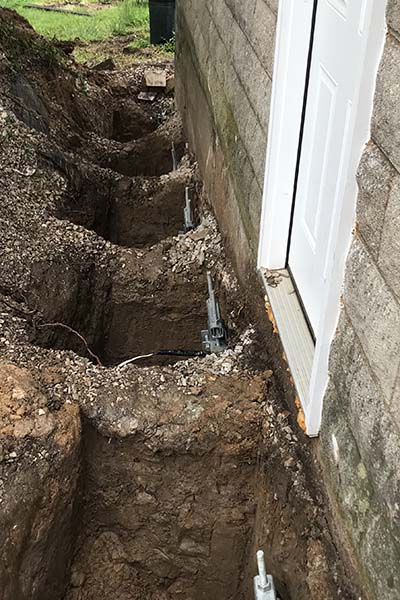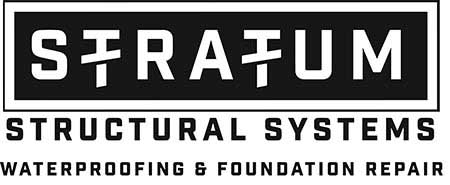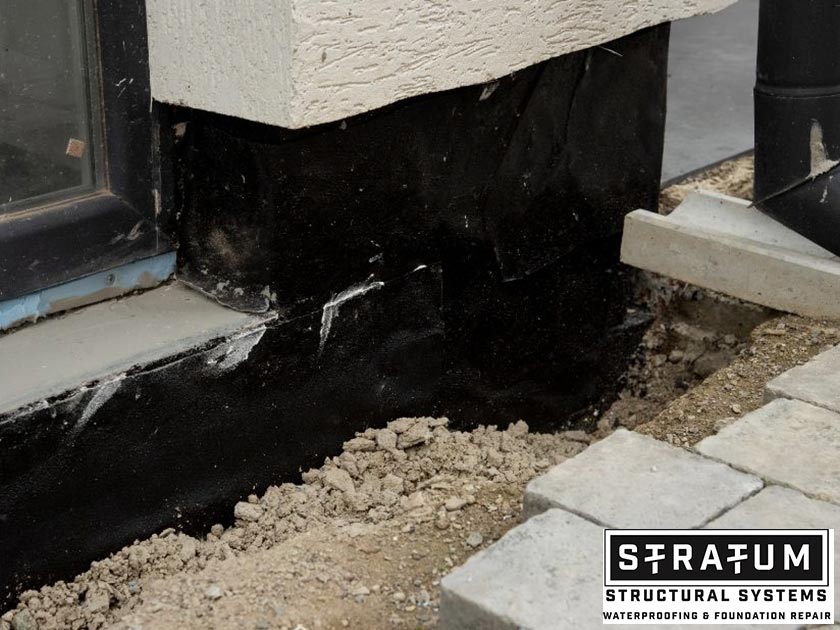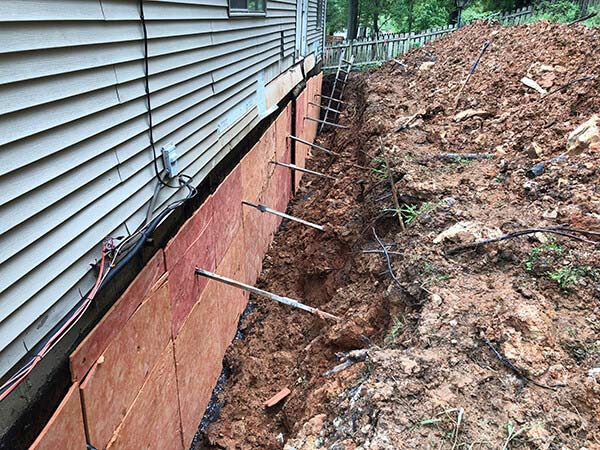How Piering Works: Stabilizing Your Home’s Foundation from Below

One of the most important things you can do as a homeowner is to keep a close eye on the little things. If you notice a hairline crack appearing in a wall or that a door is suddenly no longer closing tightly, foundation issues might be on the way. Prevent structural issues and potential water damage by addressing issues as soon as they arise. Being proactive with foundation repairs is crucial in St. Louis, as foundation shifting is typical due to our region’s clay-heavy soils. Thankfully, there are proven repairs for these common problems. Piering is an excellent way to stabilize your home and restore your faith in your property’s foundation. Let’s explore some of the reasons you should consider foundation piering for your St. Louis home.
What Is Foundation Piering?
Foundation piering is a structural repair method that involves stabilizing an existing foundation by driving steel piers deep into the ground, well below the surface soils. These piers are pushed or screwed down until they reach a layer of stable soil or solid bedrock that can reliably support the weight of the home.
Piering anchors the foundation to a deeper, more secure layer of soil or bedrock. This overcomes the weak or shifting ground near the surface that often causes settling and structural issues. Our clay soils in St. Louis make the ground very susceptible to these shifts that cause long-term damage.
After piering, the weight of your home is shifted away from unreliable upper soils and onto stable ground below. This anchor stops further movement. In many cases, piering can even lift a sinking foundation back to its original position, restoring both safety and appearance.
How Do I Know If I Need Piering?
Every home foundation issue is unique, which is why professional consultations are so important. However, piering is typically necessary when a foundation is showing signs of distress.
Common signs you might need piering include:
- Cracks in walls or floors
- Sticking doors and windows
- Uneven or sloping floors
- Leaning chimney
- Water damage
These symptoms are often caused by settling, sinking, or collapsing foundations due to unstable soil conditions or poor construction. By underpinning the foundation to solid ground, piering provides a long-term solution that restores structural integrity and prevents further movement or damage.
How Does Piering Work?
Foundation piering is a systematic process designed to stabilize and restore structures affected by settlement or shifting soils. The first step involves a thorough inspection to identify areas of the foundation that are settling, cracking, or showing other signs of instability. Foundation experts in St. Louis assess the extent of the damage and determine the best locations for installing piers.
Once the problem areas are identified, excavation begins around the foundation. This is done to expose the footing, which is the solid base that supports the structure.
Excavation is crucial for providing access to the foundation and preparing it for the installation of support brackets. These brackets are then securely attached to the underside of the footing, creating a stable connection point for the piers.
The next phase involves driving steel piers deep into the ground using hydraulic pumps. These pumps advance the piers until they reach a stable layer of soil or bedrock. This process ensures that the piers can bear the weight of the structure without further movement.
With the piers in place, the building’s weight is carefully transferred from the unstable soil onto the new supports. If necessary, hydraulic jacks are used to lift the foundation back to its original elevation, correcting any sagging or unevenness. Once the structure is stabilized and secured, the excavated areas are backfilled, and the landscape is restored, leaving the property with a strengthened, long-lasting foundation.
Types of Foundation Pier Systems
There isn’t a one-size-fits-all approach to stabilizing a settling or shifting foundation. From the type of soil it rests on to the weight and design of the structure above, every home’s foundation faces unique challenges. Different pier systems have been developed to address specific problems, soil conditions, and structural requirements. The choice of piering method depends on factors like the severity of settlement, the type of building, and the underlying ground stability. Understanding the differences between pier systems helps ensure your foundation gets the right solution for long-term stability.
Push Pier System
Push pier systems use steel tubes that are bracketed to the home’s footing. They’re hydraulically driven deep into the ground until they reach stable bedrock or load-bearing strata.
This method is typically chosen for homes experiencing significant settlement or movement. Push pier systems are commonly used in areas with unpredictable or shifting soils.
The installation process is complex and requires heavy equipment and skilled technicians to ensure the piers are driven deep enough for lasting support. However, getting this repair done is an investment in the safety of your home, as it offers a permanent and highly reliable fix for severe foundation issues.
Helical Pier System
Helical pier systems are designed like large screws that are mechanically twisted into the soil. They’re especially effective for lighter structures or situations where pre-construction stabilization is required. This type of piering system is commonly used for new additions or decks.
Helical piers are ideal in soils where deep penetration is necessary, but bedrock may be difficult to reach. They can be installed with minimal disturbance to the surrounding area. The installation is less invasive than push piers but still requires expertise to ensure the piers are properly anchored and aligned for optimal support.
Benefits of Foundation Piering
Foundation piering offers homeowners a range of significant benefits, making it one of the most effective solutions for addressing foundation issues. Piering provides permanent stabilization by anchoring your home’s foundation deep into stable soil or bedrock. It effectively prevents further settling or movement.
In many cases, this method can even lift a sunken foundation back to its original position. Therefore, piering can solve common nuisances like uneven floors and sticking doors.
The installation process is designed to be minimally disruptive, often requiring less excavation and causing less damage to landscaping compared to more invasive repair methods. This means homeowners can typically continue with their daily routines while repairs are underway, and the property’s appearance is preserved.
Unlike surface-level fixes such as crack sealing that only address symptoms and may require repeated maintenance, piering tackles the root cause of foundation problem. It delivers a stronger, more reliable long-term solution. By investing in foundation piering, homeowners gain peace of mind knowing their home is protected from recurring foundation issues and costly future repairs.
How to Get Piering In St. Louis
When it comes to piering and foundation repair in St. Louis, choosing a reliable professional is essential for protecting your home’s value and safety. The right contractor should have the experience to properly diagnose the underlying issues and recommend solutions that truly last.
Working with licensed contracts gives you peace of mind throughout the process. Professional teams have access to specialized tools, follow strict safety standards, and comply with all local regulations and permitting requirements. Attempting foundation repairs without this level of knowledge can lead to costly mistakes, incomplete fixes, or even further damage down the road.
At Stratum Structural Systems, we take pride in being the trusted choice for foundation piering and repair in the St. Louis area. With nearly 40 years of combined experience, our team is committed to putting your needs first and delivering honest, lasting solutions for every foundation challenge. If you’re seeing signs of foundation trouble, reach out to us for a free inspection. We’ll walk you through your options, answer your questions, and make sure your home is on solid ground for years to come.
Call 314-620-8153 or contact us today!



